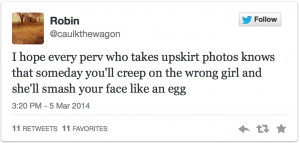By MICHELLE BERTRAN
Ray Rice, who was a running back for the Baltimore Ravens, has been banned from the National Football League because of an incident that happened in an elevator when he knocked out his then-fiancée. I would now like to address how poorly the NFL has handled this situation.
It is not certain yet, but supposedly, the video of Rice violently assaulting Janay Rice (now his wife), was given to someone in the NFL office back on April 9.
When the video was supposedly seen by this individual, not yet by the media, the NFL’s punishment to Ray Rice was only a two-game suspension. Then, as soon as the raw footage got released by TMZ on Monday, the NFL banned Rice. Therefore, it is being speculated that the league went (or tried) to go under the table here.
In my opinion, banning Rice from the NFL is an extremely lenient punishment for what he did; he should be grateful he is not behind bars. The NFL is trying to clear the situation up and see who saw what and when, but NFL spokesman; Brian McCarthy released a statement to CNN on this speculation.
“We have no knowledge of this. We are not aware of anyone in our office who possessed or saw the video before it was made public on Monday. We will look into it,” McCarthy said.
It is not a coincidence to me that, then, Rice’s punishment was only a two-game suspension when the media had not gotten hold of the video, then as soon as the media gets the video and a huge controversy arises over this is when the NFL decides to make a bigger move.
If this is the case, it will only prove that the NFL is solely about its money and has no type of ethics. The NFL sets the example for many different groups of people, even children, and the example it is setting right now is sickening.
I would argue that the NFL is in need of new leadership that will handle these kinds of situations in a proper manner and how they deserve to be treated.

 However, many celebrities took their own twist on the retro look; but not all were appreciated. Many of the celebrities attempts at trendy and unique actually raised question on its’ cultural appropriation.
However, many celebrities took their own twist on the retro look; but not all were appreciated. Many of the celebrities attempts at trendy and unique actually raised question on its’ cultural appropriation.



